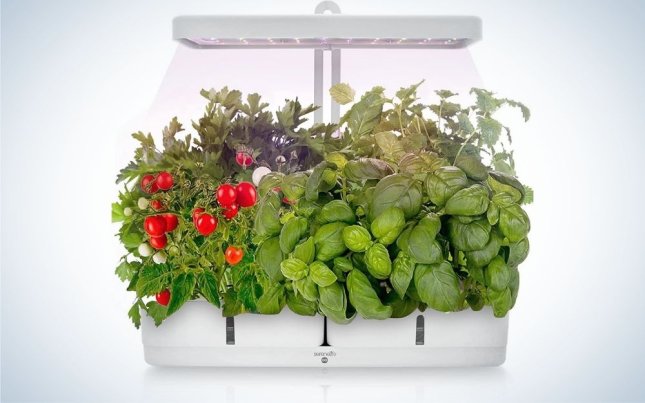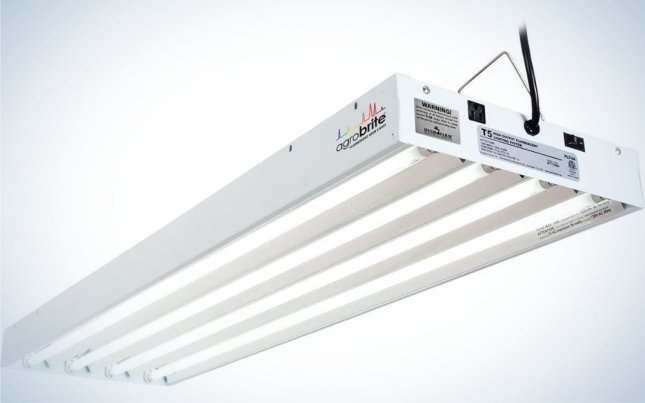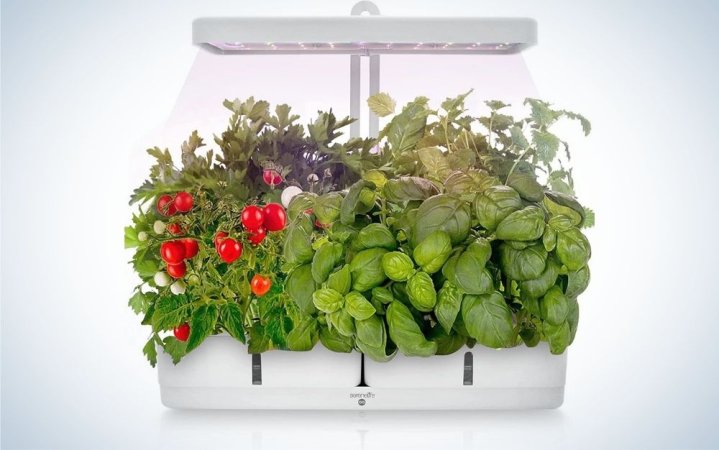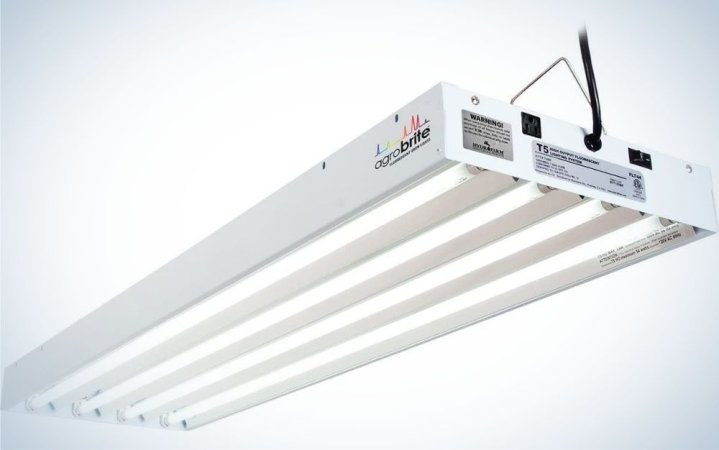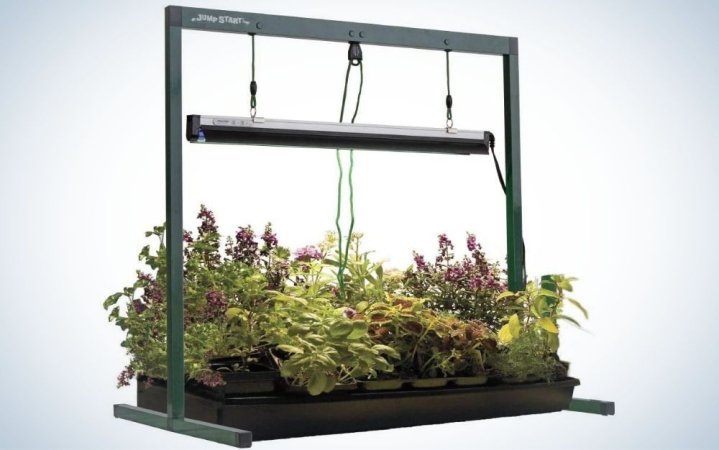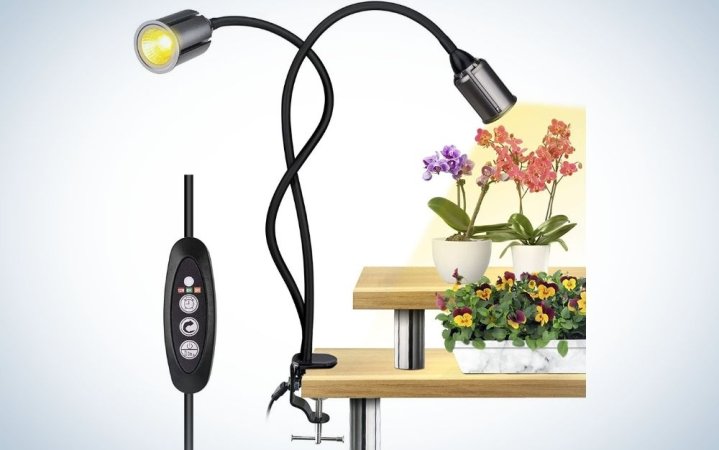We may earn revenue from the products available on this page and participate in affiliate programs. Learn more ›
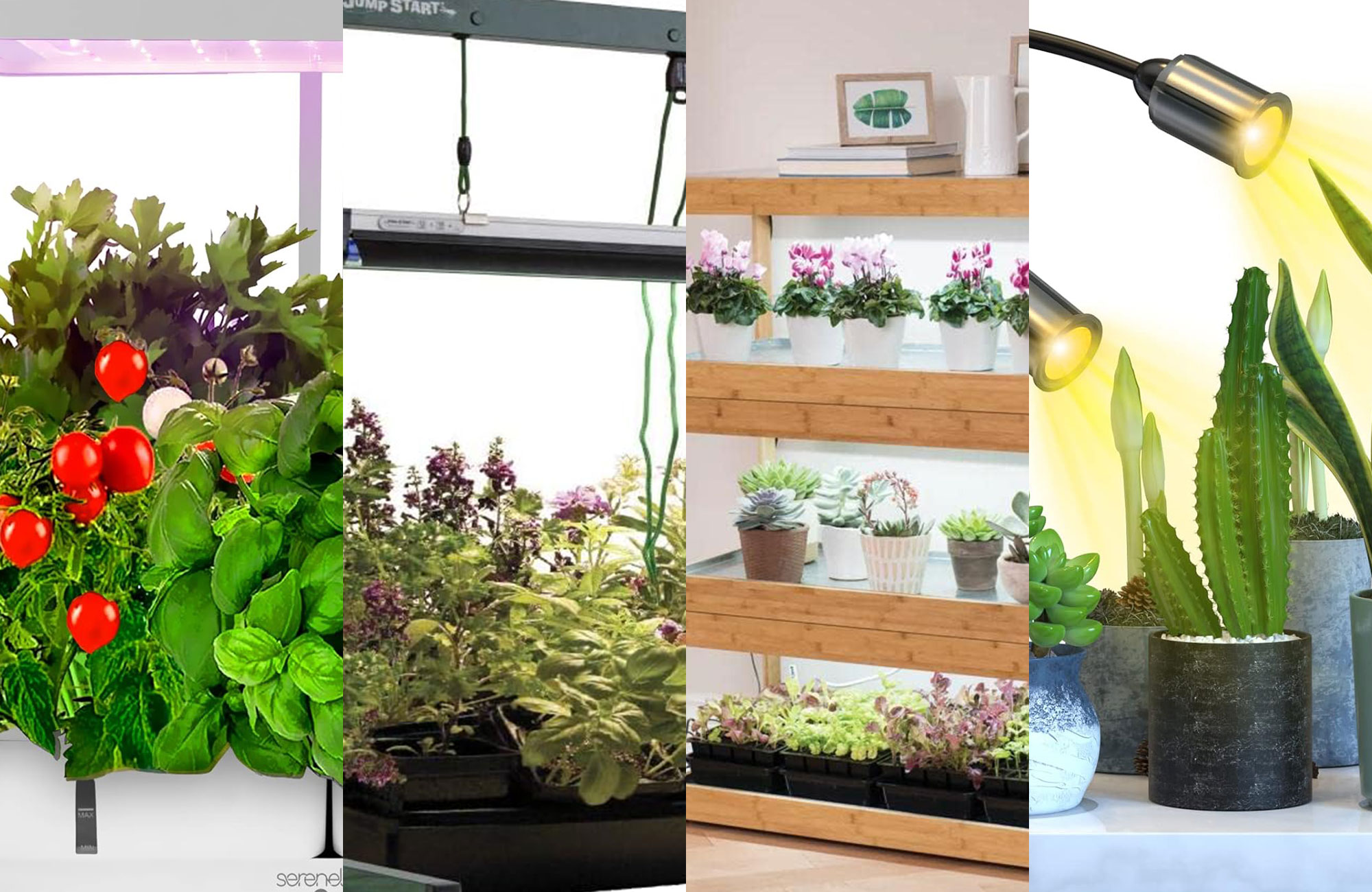
Adding grow lights to your gardening setup can extend your growing season or open up opportunities for new plants that don’t necessarily grow in your climate. Many plants are wonderfully resilient, while others wilt at the first sign of hardship. However, they all share a need for light, but figuring out exactly what kind can be tricky. No matter what you’re trying to grow, the sun could always use a little helping hand. The best grow lights won’t have you ready to open your own professional operation, but they can treat your plants right and fit nicely into your needs to get you and your plant pals exactly the right amount of light to thrive.
- Best overall: SereneLife Smart Starter Kit-Hydroponic Herb Garden
- Best fluorescent: Hydrofarm FLT44 System 4′ Fluorescent Grow Light
- Best for seedlings: Jump Start JSV2T JumpStart T5 Light Timer System
- Best for home: Gardener’s Supply Company Bamboo LED Grow Light Garden
- Best budget: Relassy LED Grow Light
How we chose the best grow lights
There are some certified plant parents on the PopSci editing and writing crew. I’m an avid gardener and have been for nearly two decades. I regularly start my seedlings inside before moving them outside into the New York state climate.
To create this list, we surveyed dozens of different models online and drew from real-world experience. This list represents a wide swath of options that could cover a variety of very different situations. Some are more appropriate for serious growers, while others are fine for those with a casual interest or are just getting started. We try to lay out the different technologies and options here in a clear way to help along the way.
The best grow lights: Reviews & Recommendations
One of our choices should help keep your beloved plants happy when the weather becomes too cold for them to live outside.
Best overall: SereneLife Smart Starter Kit-Hydroponic Herb Garden
Best grow lights for micro greens
Salad shooter
Why it made the cut: If you don’t want to buy an individual light and build a grow room, you can simply buy this indoor herb garden that automatically tends to your plants.
Specs
- Light type: LED
- Dimensions: 7.7 x 5.2 x 19.2 inches
- Adjustable?: Yes
Pros
- All-in-one hydroponic solution
- Adjustable light and timer
- Compact enough to sit on a counter
Cons
- Requires peat pellets
- Limited to 8 plants at a time
As the best grow lights for micro greens, this miniature hydroponic setup includes its own 18-watt LED grow light that stays on for 16 hours per day and turns off for the other eight. That simulates the natural cycle of the sun, which makes plants happy.
The base of the light is a full-on hydroponic setup. Insert seeds in the compact peat pellets and water will circulate through it automatically to give the ideal hydration. Everything happens automatically, so you don’t have to tend to it.
This approach works wonderfully for microgreens, which grow quickly and easily under these conditions. Once the plants start getting too tall, you can raise the light to make more room for the plants. It’s a solid alternative to buying individual pieces for a small grow room if you’re just starting.
Best fluorescent: Hydrofarm FLT44 System 4′ Fluorescent Grow Light
Best fluorescent grow lights
Feel the flo
Why it made the cut: Many pros opt for fluorescent light. This one offers a huge output that covers lots of area in case you’re going big.
Specs
- Light type: Fluorescent
- Dimensions: 46 x 13.5 x 3 inches
- Adjustable?: Yes
Pros
- Very bright
- Covers lots of area
- Full-spectrum
- Bulbs last a long time
Cons
- Expensive
- Big
- Heavy power use
If you want a pro-grade grow room, this Hydrofarm fluorescent light bank measures nearly four feet long and can put out almost 19,000 lumens when fully outfitted with high-output T5 bulbs. That’s a lot of light. Specular aluminum reflectors sit behind the bulbs to direct the light rays where they need to go.
The bank ships with four 6400K light tubes that mimic the color of the sun, which means they won’t throw wild tints around your grow room, just clean, white light. The powder-coated steel housing is huge but also burly, so it can survive bumps and bruises if you need to move things around.
This isn’t as power-efficient as LED, but you get a much higher overall power level out of this bank than a typical LED. As the best fluorescent grow lights, these fluorescent banks can also daisy chain together to run multiples off a single outlet, which is handy if you’re low on sockets.
Best for seedlings: Jump Start JSV2T JumpStart T5 Light Timer System
Best grow lights for seedlings
Bloomers
Why it made the cut: If you want to start your plants indoors before taking them out for the season, this is a great solution.
Specs
- Light type: Fluorescent
- Dimensions: 4.02 x 2.95 x 29.69 inches
- Adjustable?: Yes
Pros
- One requires one bulb
- High output
- Low heat
- Automatic timer
Cons
- Can’t accommodate taller plants
If you get your seeds going before the growing season officially starts in your area, you can effectively extend the season and get more out of your veggie plants. Jump Start, the best grow light for seedlings, features a lighting system that suspends a single fluorescent tube above the growing area. You can raise and lower it with the electronic ballast. You typically want to keep the full-spectrum light roughly three to six inches away from your fresh little growers, but adjusting is simple.
The built-in timer lets you automate the on/off process by splitting the day in half or breaking it up into 18 hours on and six hours off. Fluorescent lights are high output but don’t produce much heat, so they’re also good for plants like orchids, which can be very finicky.
Best for home: Gardener’s Supply Company Bamboo LED Grow Light Garden
Best grow lights for home
Shelf improvement
Why it made the cut: This shelving system is basically a vertical indoor garden that helps nurture plants from their start.
Specs
- Light type: LED
- Dimensions: 46 x 26 x 8 inches
- Adjustable?: No
Pros
- Galvanized plant tray won’t degrade with watering
- Attractive bamboo construction
- Built-in lights
Cons
- Expensive
- Requires lots of space
The shelves on this bamboo setup are lined with LEDs that pump out full-spectrum light to the plants sitting below. The bottom shelf can hold up to 50 pounds of plants, while the upper shelves can hold up to 30 pounds each.
The bottoms of the shelves are lined with galvanized steel so water won’t destroy the surfaces if you spill during watering. The furniture-grade bamboo frame is built to last for decades without much upkeep. You can stack the segments in any order, but all three rows of grow lights draw all the power they need from a single power outlet. Buying the best grow lights for home is a great way to start and show off a whole bunch of house plants without spreading them out all over your house.
Best budget: Relassy LED Grow Light
Best grow lights for outdoor plants (when they’re indoors)
Plant staycation
Why it made the cut: When outdoor plants need to come inside for the winter, they don’t necessarily need an onslaught of light. These adjustable lights have what they crave.
Specs
- Light type: LED
- Dimensions: 29 x 2.5 x 2.5 inches
- Adjustable?: Yes
Pros
- Adjustable lights
- Full spectrum illumination
- 4 dimmable levels
- Built-in timer
Cons
- Not super powerful
Some plants can thrive outside in the summer but need to come into the warmth for the winter. In that case, they almost certainly need some help in the photosynthesis department from supplemental light. This adjustable light uses high-intensity LEDs in order to pump out the equivalent of 75 watts of light while consuming 25 watts of power.
These best grow lights for outdoor plants have a built-in timer that’s highly customizable in three-, six-, and nine-hour chunks. The flexible gooseneck design allows you to pinpoint where you want the light, so it’s easy to move it closer or farther away for more control.
The full-spectrum light mimics the sun and doesn’t cast weird shades in your home when it’s on, which is good for both the plants and the vibe in your house.
What to consider when buying the best grow lights
Here is what you should know when getting your own grow light for your home:
Type of light
The two types of light on this list are LEDs and fluorescents. The latter has been a very popular choice with growers for decades. High-output T5 tubes can produce an impressive amount of light that will nurture plants at any level. Fluorescents are high output but low heat, which is good if you don’t want to burn your fledgling plants.
LEDs are extremely efficient and use less power. They’re also often much more flexible in their physical size and shape because they don’t require long tubes in order to generate illumination.
Power consumption
If you’re keeping grow lights on up to 18 hours per day, they’re going to consume considerable power, even if you’re using efficient LEDs. You want something with a built-in timer because then you won’t forget to turn it on and off, which is bad for your electric bill and the plants.
Remember, watts indicate relative power with incandescent bulbs, but it doesn’t quite work that way with LEDs. You can directly compare lights if they say how many lumens they produce, but watts are no longer an effective way to directly compare output when you’re talking about LEDs.
Adjustability
Some plants can be picky about how close or far away a light can be for it to get the desired benefits. Adjustable lights help ensure that the illumination source stays the desired distance from the plants themselves so they don’t starve or burn.
FAQs
Lower-wattage LEDs should sit between 12-20 inches away from the top of the plant. Higher wattage LEDs should sit between 36-46 inches away from the top of the plant.
Generally, they should be between 300-800 lumens per square foot. That comes out to around 20-40 watts per square foot.
They should be on for 8-10 hours a day, around the same time the sun shines.
Final thoughts on the best grow lights
- Best overall: SereneLife Smart Starter Kit-Hydroponic Herb Garden
- Best fluorescent: Hydrofarm FLT44 System 4′ Fluorescent Grow Light
- Best for seedlings: Jump Start JSV2T JumpStart T5 Light Timer System
- Best for home: Gardener’s Supply Company Bamboo LED Grow Light Garden
- Best budget: Relassy LED Grow Light
The sun does a wonderful job nurturing plants with its light, but it can’t always get to plants inside your home. That’s where the best grow lights come in. Just be sure to choose the right kind for your plants, your home, and your budget.
